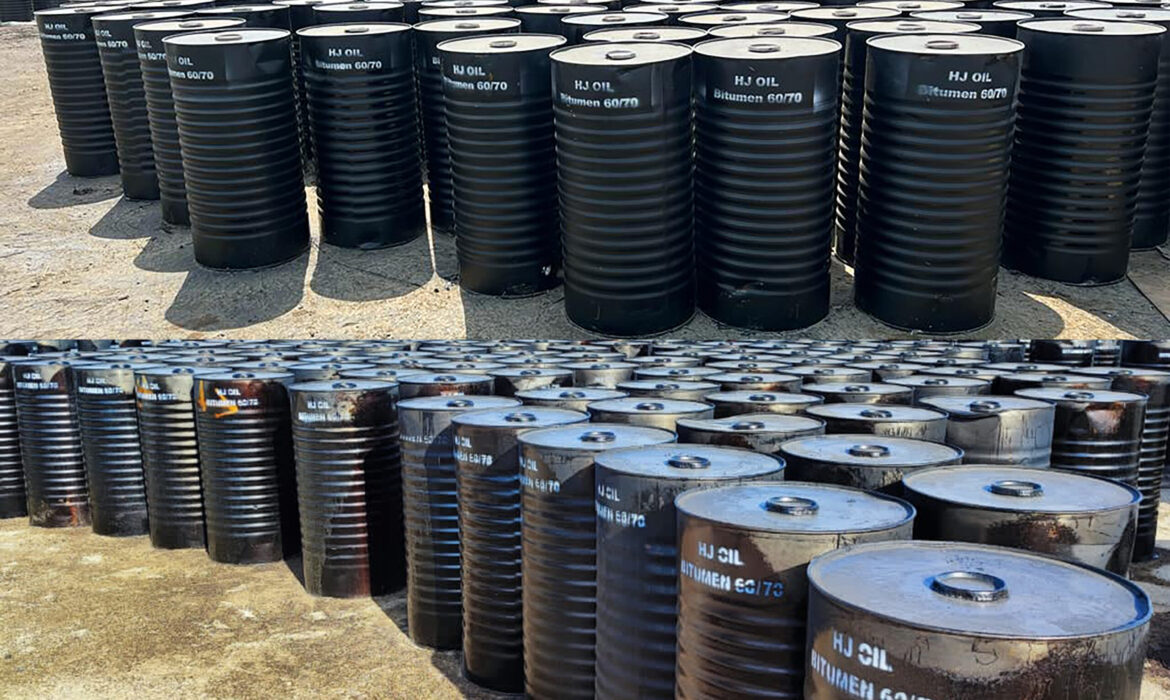
Bitumen Penetration Grade 60/70
Bitumen Penetration Grade 60/70 Description
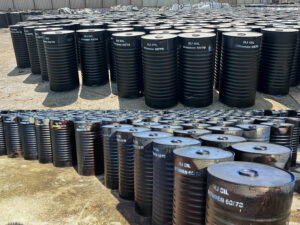
Bitumen penetration grade 60/70 means the penetration value is in the range 60 to 70 at standard test conditions which commonly used as a Paving Grade. Bitumen is applicable for the production of hot mix asphalt for bases and pavements and for road construction. Penetration Grade Bitumen supplied by HJ Oil is produced through aeration on vacuum bottom (the raw material used for making bitumen left in vacuum distillation column in oil refineries) in bitumen production units. Its penetration grade ( the measure of bitumen hardness) is between 60 to 70. Bitumen is specified by the penetration and softening point test. Designing is by penetration range only. The penetration grade bitumen has a thermoplastic property which causes the material to soften at high temperatures and to harden at lower temperatures. This unique temperature-viscosity relationship is important when determining the performance parameters such as the adhesion, rheology, durability, and application temperatures of bitumen.
The Bitumen mode is dependent on temperature. The temperature-vs-stiffness relationship of bitumen is dependent on the type of crude oil and its refining method. Bitumen Penetration Grade 60/70 is semi-hard penetration grade bitumen used as a paving grade bitumen which is suitable for road construction and repair. It is also used for the production of asphalt pavements with the technical specification. This grade of bitumen is mainly used in the manufacturing of hot mix asphalt for bases and wearing courses. Bitumen 60/70 is one of the most used bitumen grades and it’s a basic material for all other bituminous products.
Penetration determines the hardness of bitumen by measuring the depth to which a standard loaded the needle will vertically penetrate in 5 seconds, in a sample of bitumen maintained at a temperature of 25 degrees Celsius.
Bitumen Penetration Grade 60/70 Applications
Bitumen 60/70 is suitable for road construction and for the asphalt pavements with superior properties. This type of bitumen used in the manufacture of hot mix asphalt for bases and wearing courses and the main usage of this product is used in the road in mild regions. The bitumen is provided during the presses of oxidation of vacuum bottom in bitumen production units. Due to its medium air blowing and penetration, it is used in mild areas.
Guaranty and safety of bitumen 60/70
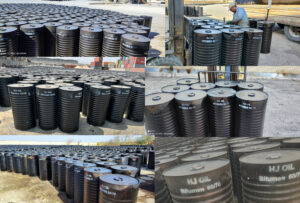
We guaranty the quality of bitumen penetration grade 60/70 with the arrangement of the international inspectors to check quality and quantity during the loading to the vessel and controlling the production by QC by batch test report before shipping. We guaranty the quality to meet with ASTM.
Bitumen Penetration Grade 60/70 Specifications
| Bitumen 60/70 | Test method | Unit | Specification |
| Specific gravity @ 25°C | ASTM D70 | Kg/cm3 | 1.01/1.06 |
| Penetration @ 25°C | ASTM D5 | mm/10 | 60/70 |
| Softening point °C | ASTM D36 | °C | 49/56 |
| Ductility @25 °C | ASTM D113 | cm | 100 min |
| Loss on heating(wt) % | ASTM D6 | wt % | 0.2 max |
| Drop in penetration after heating % | ASTM D5-D6 | % | 20 max |
| Flashpoint °C | ASTM D92 | °C | 232 min |
| Solubility in Trichloroethylene | ASTM D2042 | wt % | 99 min |
| Spot test | A.A.S.H.O.T102 | Negative |
Packing of Bitumen 60/70
Paving Bitumen 30/40 is commonly packed in new steel drums, 150, 180 & 220 Kg barrels, 1MT and 500Kg Jumbo Bags, or 300kg Bitubag.
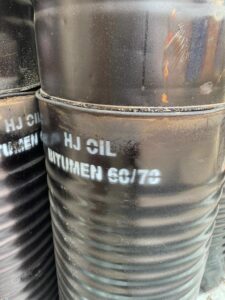
Bitumen Penetration Grade 40/50
Bitumen Penetration Grade 40/50 Description

Bitumen penetration grade 40/50 bitumen means the penetration value is in the range 40 to 50 at standard test conditions which commonly used as a Paving Grade. Bitumen is applicable for the production of hot mix asphalt for bases and pavements and for road construction. Penetration Grade Bitumen supplied by HJ Oil is produced through aeration on vacuum bottom (the raw material used for making bitumen left in vacuum distillation column in oil refineries) in bitumen production units. Its penetration grade ( the measure of bitumen hardness) is between 40 to 50. Bitumen is specified by the penetration and softening point test. Designing is by penetration range only. The penetration grade bitumen has a thermoplastic property which causes the material to soften at high temperatures and to harden at lower temperatures. This unique temperature-viscosity relationship is important when determining the performance parameters such as the adhesion, rheology, durability, and application temperatures of bitumen.
The Bitumen mode is dependent on temperature. The temperature-vs-stiffness relationship of bitumen is dependent on the type of crude oil and its refining method. Bitumen penetration grade 40/50 is semi-hard penetration grade bitumen used as a paving grade bitumen which is suitable for road construction and repair. It is also used for the production of asphalt pavements with the technical specification. This grade of bitumen is mainly used in the manufacturing of hot mix asphalt for bases and wearing courses. Bitumen 40/50 is one of the most used bitumen grades and it’s a basic material for all other bituminous products.
Bitumen Penetration Grade 40/50 Applications
Bitumen 40/50 is Suitable for road construction and for the asphalt pavements with superior properties. This type of bitumen used in the manufacture of hot mix asphalt for bases and wearing courses and the main usage of this product is used in the road in tropical regions. the bitumen is provided during the presses of oxidation of vacuum bottom in bitumen production units. Due to its high air blowing and penetration, it is used in tropical areas with the Warm weather. It is not softened at high temperatures and does not fail its qualities.
Guaranty and safety of bitumen 40/50
HJ Oil guaranty the quality of bitumen penetration grade 40/50 with the arrangement of the international inspector to check quality and quantity during the loading to the vessel and controlling the production by QC by batch test report before shipping. HJ Oil guarantees the quality to meet with ASTM.
Bitumen Penetration Grade 40/50 Specifications
| Bitumen 40/50 | Test method | Unit | Specification |
| Specific gravity @ 25°c | ASTM D70 | Kg/cm3 | 1.01/1.06 |
| Penetration @ 25°c | ASTM D5 | mm/10 | 40/50 |
| Softening point °c | ASTM D36 | °C | 52/60 |
| Ductility @25 °c | ASTM D113 | cm | 100 min |
| Loss on heating(wt) % | ASTM D6 | wt % | 0.2 max |
| Drop in penetration after heating % | ASTM D5-D6 | % | 20 max |
| Flash point °c | ASTM D92 | °C | 250 min |
| Solubility is CS2(wt) % | ASTM D4 | wt % | 99.5 min |
| Spot test | A.A.S.H.O.T102 | Negative |
Bitumen C600
Bitumen C600 Description
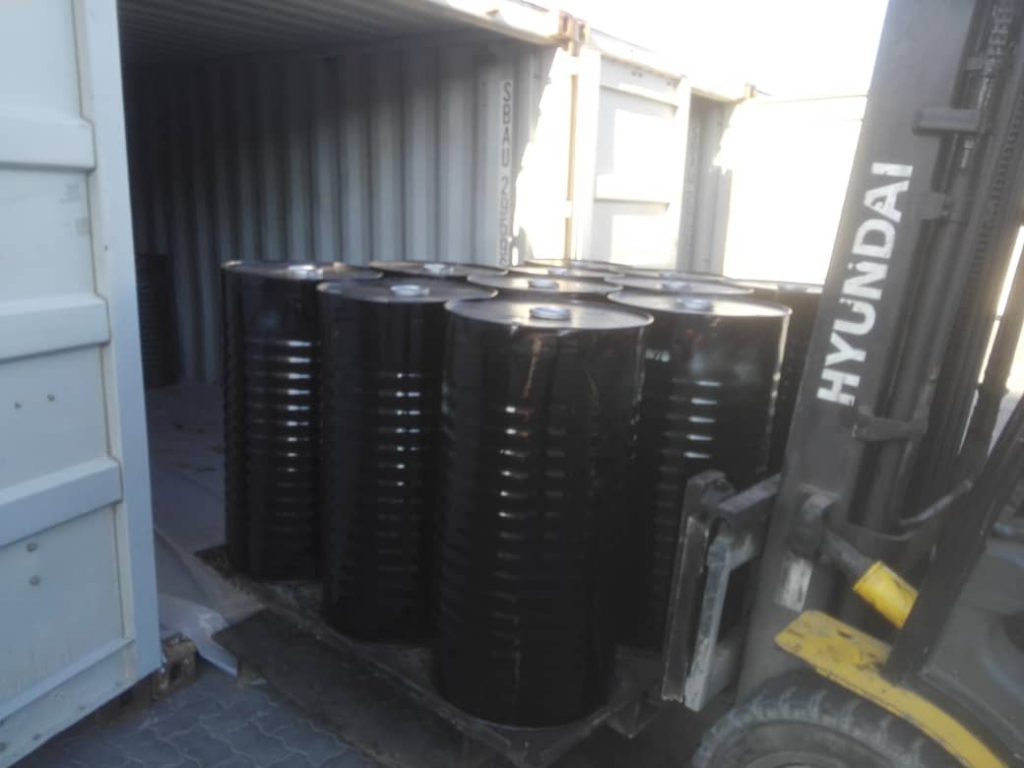
C600 is a paving grade bitumen manufactured to AS 2008 Table 2.2 and is primarily suitable for use in high modulus
base course asphalt.
Summary of benefits
The Viva standards to which C600 bitumen is made result in a very consistent bitumen with predictable handling and performance characteristics
Bitumen C600 Applications
C600 bitumen is the hardest paving grade bitumen available in Australia and is mainly used to produce high modulus
asphalt. Heavy-duty asphalt pavements need to be designed to accommodate significant traffic loadings for up to 40
years without exhibiting structural failure and hence, need to be constructed using appropriate materials. The load
spreading characteristics of pavement layers are governed by their stiffness and C600 bitumen facilitates the production of high modulus asphalt.
| Mixing Temperature | Holding time at Mixing Temperature | Medium term storage temperature | Medium term storage time | Maximum safe handling temperature |
| 175 – 185°C | 14 days | 130-150°C | 30 days | 190°C |
Health & safety
C600 is unlikely to present any significant health or safety hazard when properly used in the recommended
an application where good standards of industrial practice are maintained.
Bitumen C600 Typical characteristics
| Description | Units | Methods | Typical |
| Viscosity at 60° | Pa.s | AS 2341.2 | 600 |
| Viscosity at 135° | Pa.s | AS 2341.2 | 0.7 |
| Pen at 25° | dmm | AS 2341.12 | min 20 |
| Flashpoint | °C | AS 2341.14 | max 250 |
| Viscosity of residue at 60° C (% of original) | Pa.s | AS 2341.2 | max 300 |
Bitumen, also known as asphalt in the United States, is a substance that forms through the distillation of crude oil. It has waterproofing and adhesive properties. Bitumen production through distillation removes lighter crude oil components, such as gasoline and diesel, leaving the “heavier” Asphalt behind. The producer often refines it several times to improve its grade. Bitumen can also occur in nature: Deposits of naturally occurring bitumen form at the bottom of ancient lakes, where prehistoric organisms have since decayed and have been subjected to heat and pressure.
Bitumen C450
Bitumen C450 Description
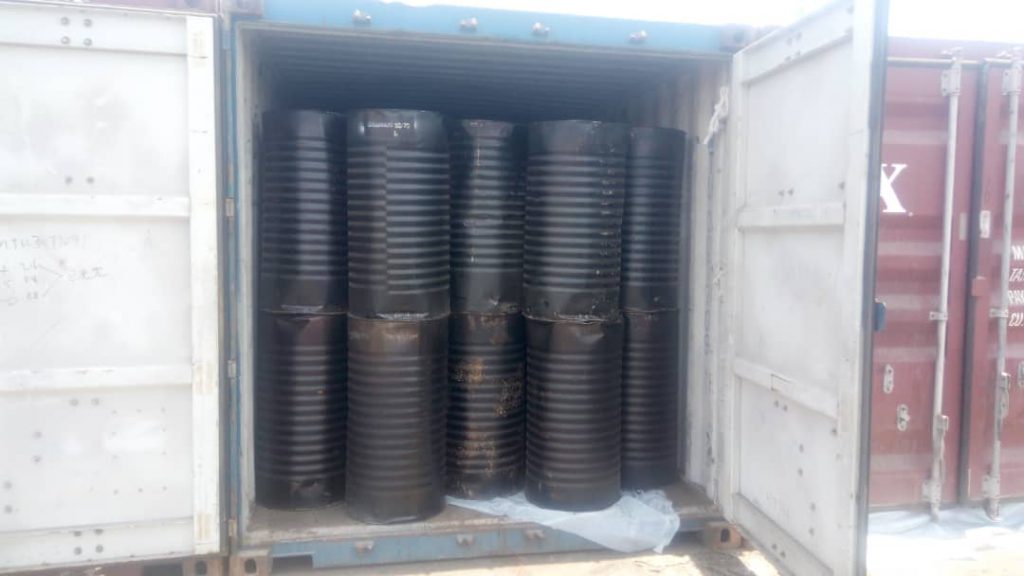
Bitumen C450 is a paving grade bitumen manufactured to comply with AS2008 Table 2.2 and is suitable for use in heavily trafficked asphalt.
Bitumen C450 Applications
C450 was originally a development from the Roads and Maritime Services in New South Wales and was incorporated into the 2012 revision of the national bitumen standard AS2008. C450 has been formulated to meet the viscosity requirements of AS2008 Table 2.2 whilst retaining excellent asphalt workability characteristics. The target applications are asphalt wearing courses and base courses for heavily trafficked pavements.
Asphalt recommendations
| Mixing Temperature | Holding time at Mixing Temperature | Medium term storage temperature | Medium term storage time | Maximum safe handling temperature |
| 165-175°C | 14 days | 130-150°C | 30 days | 190°C |
Health & safety
C450 is unlikely to present any significant health or safety hazard when properly used in the recommended application where good standards of industrial practice are maintained.
Further guidance on Product Health and Safety is available on the relevant Material Safety Data Sheet
Bitumen C450 Specifications
| Description | Units | Methods Typical | Results |
| Viscosity at 60° after RTFOT | Pa.s | AS 2341.2 | 750 – 1150 |
| Viscosity at 135° | Pa.s | AS 2341.2 | 0.7 max |
| Pen at 25° after RTFOT | dmm | AS 2341.12 | min 26 |
| Flashpoint | °C | AS 2341.14 | min 250 |
Bitumen, also known as asphalt in the United States, is a substance that forms through the distillation of crude oil. It has waterproofing and adhesive properties. Bitumen production through distillation removes lighter crude oil components, such as gasoline and diesel, leaving the “heavier” Asphalt behind. The producer often refines it several times to improve its grade.
Bitumen C320
Bitumen C320 Description

Bitumen C320 is a paving grade bitumen manufactured to AS 2008 Table 2.2 and is suitable for medium to heavy asphalt applications as well as for heavy-duty and hot climate seals.
C320 Applications
Bitumen C320 is primarily for use in asphalt, but can also be sprayed as a sealing binder for heavy-duty applications and in hot desert regions. In asphalt applications, appropriate mixture and pavement designs should be employed to maximize the performance of the asphalt layer in service.
Recommended handling data for asphalt applications are as follows:
| Mixing Temperature | Holding time at Mixing Temperature | Medium term storage temperature | Medium term storage time | Maximum safe handling temperature |
| 165-175°C | 14 days | 130-150°C | 30 days | 185°C |
Sealing recommendations
| Spraying Temperature | Holding time at spraying temperature | Medium term storage temperature | Medium term storage time | Minimum pavement temperature |
| 170-185°C | 7 days | 130-150°C | 30 days | 15°C |
Health & safety
Viva Bitumen C320 is unlikely to present any significant health or safety hazard when properly used in the recommended application where good standards of industrial practice are maintained.
Bitumen C320 Typical characteristics
| Description | Units | Methods | Typical |
| Viscosity at 60° C | Pa.s | AS 2341.2 | 320 |
| Viscosity at 135° C | Pa.s | AS 2341.2 | 0.5 |
| Pen at 25° C | dmm | AS 2341.12 | min 40 |
| Flashpoint | ° C | AS 2341.14 | min 250 |
| Viscosity of residue at 60° C (% of original) | Pa.s | AS 2341.2 | max 300 |
Bitumen, also known as asphalt in the United States, is a substance that forms through the distillation of crude oil. It has waterproofing and adhesive properties. Bitumen production through distillation removes lighter crude oil components, such as gasoline and diesel, leaving the “heavier” Asphalt behind. The producer often refines it several times to improve its grade.
Bitumen C240
Bitumen C240 Description
C240 is a paving grade Bitumen manufactured to AS 2008 Table 2.2 and is suitable for standard sealing and lightly trafficked asphalt applications.
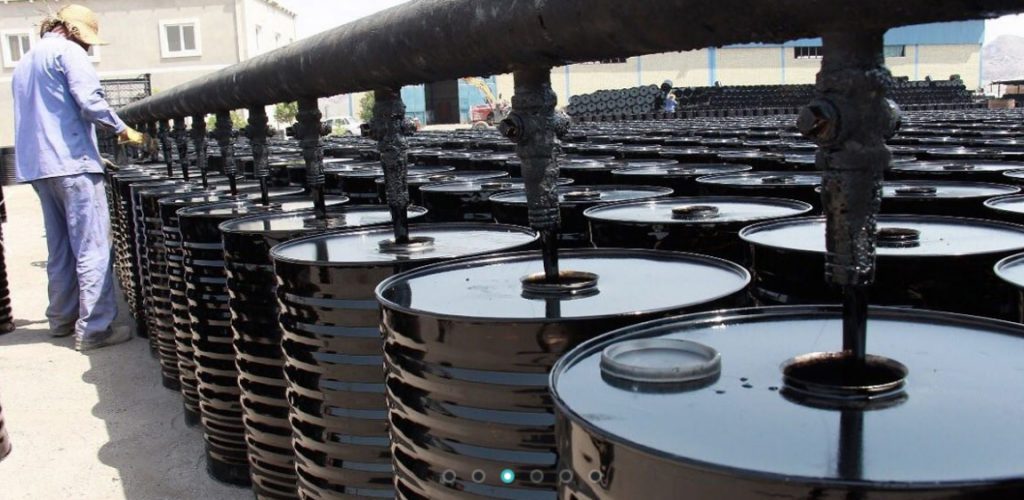
Bitumen C240 Applications
C240 bitumen can be used for all standard spray sealing and lightly trafficked asphalt applications.
Asphalt recommendations
| Mixing Temperature | Holding time at Mixing Temperature | Medium term storage temperature | Medium term storage time | Maximum safe handling temperature |
| 140-165°C | 14 days | 130-150°C | 30 days | 175°C |
Sealing recommendations
| Spraying Temperature | Holding time at spraying temperature | Medium term storage temperature | Medium term storage time | Minimum pavement temperature |
| 170-180°C | 7 days | 130-150°C | 30 days | 15°C |
During sealing operations, it is normal practice to add cutter oil to the bitumen to reduce binder viscosity to a level at which effective wetting and adhesion of the cover aggregate can take place. The quantity of cutter oil added to the bitumen depends upon the pavement temperature, the daily traffic, and the nominal size of the cover aggregate.
Basic cutting practice for Viva Bitumen C170 bitumen should be as follows:
Parts cutter per 100 parts bitumen measured at 15°C
| Pavement Temperature (°C) | Traffic (veh/lane/day) | Nominal Aggregate Size: 10mm or greater | Nominal Aggregate Size: 7mm or less |
| 15 to 20 | low (<100) med (100 – 1500) high (>1500) | 7-8 5-6 4 | 7-10 6-8 5-6 |
| 20 to 25 | low med high | 7-8 5-6 4 | 7-10 6-8 5-6 |
| 26 to 35 | low med high | 4-6 2-4 2-3 | 6-8 5-7 4-6 |
| >36 | all | 0-2 | 0-3 |
Bitumen C240 Health & safety
Bitumen C240 is unlikely to present any significant health or safety hazard when properly used in the recommended application where good standards of industrial practice are maintained. Further guidance on Product Health and Safety is available on the relevant Material Safety Data Sheet.
Typical characteristics
| Description | Units | Methods | Typical |
| Viscosity at 60° C | Pa.s | AS 2341.2 | 240 |
| Viscosity at 135° C | Pa.s | AS 2341.2 | 0.45 |
| Pen at 25° C | dmm | AS 2341.12 | min 53 |
| Flashpoint | ° C | AS 2341.14 | min 250 |
| Viscosity of residue at 60° C (% of original) | Pa.s | AS 2341.2 | max 300 |
Bitumen C170
Bitumen C170 Description
Bitumen C170 is a paving grade bitumen manufactured to AS 2008 Table 2.2 and is suitable for standard sealing and lightly trafficked Asphalt applications.

Bitumen C170 Applications
C170 bitumen can be used for all standard spray sealing and lightly trafficked asphalt applications.
Asphalt recommendations
| Mixing Temperature | Holding time at Mixing Temperature | Medium term storage temperature | Medium term storage time | Maximum safe handling temperature |
| 140-165°C | 14 days | 130-150°C | 30 days | 175°C |
Sealing Recommendations
| Spraying Temperature | Holding time at spraying temperature | Medium term storage temperature | Medium term storage time | Minimum pavement temperature |
| 170-180°C | 7 days | 130-150°C | 30 days | 15°C |
During sealing operations, it is normal practice to add cutter oil to the bitumen to reduce binder viscosity to a level at which effective wetting and adhesion of the cover aggregate can take place. The quantity of cutter oil added to the bitumen depends upon the pavement temperature, the daily traffic, and the nominal size of the cover aggregate. Basic cutting practice for Viva Bitumen C170 bitumen should be as follows:
Parts cutter per 100 parts bitumen measured at 15°C
| Pavement Temperature (°C) | Traffic (veh/lane/day) | Nominal Aggregate Size: 10mm or greater | Nominal Aggregate Size: 7mm or less |
| 15 to 20 | low (<100) med (100 – 1500) high (>1500) | 7-8 5-6 4 | 7-10 6-8 5-6 |
| 20 to 25 | low med high | 7-8 5-6 4 | 7-10 6-8 5-6 |
| 26 to 35 | low med high | 4-6 2-4 2-3 | 6-8 5-7 4-6 |
| >36 | all | 0-2 | 0-3 |
Health & safety
HJ OIL Bitumen C170 is unlikely to present any significant health or safety hazard when properly used in the recommended application where good standards of industrial practice are maintained. Further guidance on Product Health and Safety is available on the relevant Material Safety Data Sheet.
Typical characteristics
| Description | Units | Methods | Typical |
| Viscosity at 60° C | Pa.s | AS 2341.2 | 170 |
| Viscosity at 135° C | Pa.s | AS 2341.2 | 0.35 |
| Pen at 25° C | dmm | AS 2341.12 | min 62 |
| Flashpoint | ° C | AS 2341.14 | min 250 |
| Viscosity of residue at 60° C (% of original) | Pa.s | AS 2341.2 | max 300 |

Cationic Bitumen Emulsion K3
Cationic Bitumen Emulsion K3 Description

Bitumen Emulsion K3 cationic bitumen emulsion (medium setting) road emulsion that contains 57% bitumen, is black in color and is manufactured strictly as per KS 02-769: 1990 standard.
Bitumen Emulsion K3 is cold applied, liquid bitumen emulsions, used in the construction and repair of pavements, driveways, roads, and highways.
Cationic Bitumen Emulsion K3 Applications
Bituminous-aggregate mixtures
For pavement bases and surfaces:
- Plant mix (cold): with open-graded aggregate
Mixed-in-place:
- Open-graded aggregate
Bituminous applications
- Crack Filler
Maintenance mix
- Immediate use
Cationic emulsions may be used at ambient temperatures with aggregates, which need not be completely dry. Emulsions are less hazardous to use and can be applied in a wider range of conditions.
Application Conditions of Cationic Emulsion Bitumen K3
Bitumen Emulsion K3 must only be applied in dry, frost-free conditions which will remain throughout the film drying period. Temperatures of between 5°C and 35°C should prevail.
Before application drums should be well rolled to agitate contents before use. Cationic emulsions should be applied by brushing with a hand broom or squeegee. Spread in one direction only and avoid scrubbing often. It is more practical to apply by spray as this provides uniform distribution and even film. Spray equipment should conform to BS3136: Specification for Cold Emulsion Spraying Machines for Roads.
Spray evenly to avoid ponding in hollows as this may cause localized “fatting up” of the subsequent courses.
Preparation
All surfaces must be dry and free from dust, oil, grease, fuel spillage, mud, leaves, etc. In hot weather, it may be advisable to dampen the surface with water in order to retard the loss of water from the emulsion as it cures and to ensure better wetting of the surface by the emulsion. It is essential that the surface is free of standing water prior to and during application.
Bitumen Emulsion K-3 Packing
Bitumen Emulsion K3 is available in
- Bulk as IBC Tank, Flexi Tank
- Reconditioned steel drums 200 lit.
- New steel drums 200 lit.
Cationic Bitumen Emulsion K3 Specifications
| No | Property | Result |
| 1 | Particle charge | Pos. |
| 2 | Residue on 710 um KS sieve (%)(m/m), maximum | 0.05 |
| 3 | Residue on 150 um KS sieve (g per 100 mL), maximum | 0.15 |
| 4 | Binder content (%)(m/m), minimum | 57 |
| 5 | Viscosity (degrees Engler (°E) at 20°C | 10 max |
| 6 | Viscosity redwood No. II (s at 85°C) | – |
| 7 | Storage stability (long period test) % water content difference, maximum | 2 |
Cationic Bitumen Emulsion K2
Cationic Bitumen Emulsion K2 Definition

Cationic Bitumen Emulsion K2 cationic bitumen emulsion (medium setting) road emulsion that contains 57% bitumen, is black in color and is manufactured strictly as per KS 02-769: 1990 standard.
Bitumen Emulsion K2 is cold applied, liquid bitumen emulsions, used in the construction and repair of pavements, driveways, roads, and highways.
Cationic Bitumen Emulsion K2 Applications
Bituminous-aggregate mixtures
For pavement bases and surfaces:
- Plant mix (cold): with open-graded aggregate
Mixed-in-place:
- Open-graded aggregate
Bituminous applications
- Crack Filler
Maintenance mix
- Immediate use
Cationic emulsions may be used at ambient temperatures with aggregates, which need not be completely dry. Emulsions are less hazardous to use and can be applied in a wider range of conditions.
Application Conditions of Cationic Emulsion Bitumen K2
Bitumen Emulsion K2 must only be applied in dry, frost-free conditions which will remain throughout the film drying period. Temperatures of between 5°C and 35°C should prevail.
Before application drums should be well rolled to agitate contents before use. Cationic emulsions should be applied by brushing with a hand broom or squeegee. Spread in one direction only and avoid scrubbing often. It is more practical to apply by spray as this provides uniform distribution and even film. Spray equipment should conform to BS3136: Specification for Cold Emulsion Spraying Machines for Roads.
Spray evenly to avoid ponding in hollows as this may cause localized “fatting up” of the subsequent courses.
Preparation
All surfaces must be dry and free from dust, oil, grease, fuel spillage, mud, leaves, etc. In hot weather, it may be advisable to dampen the surface with water in order to retard the loss of water from the emulsion as it cures and to ensure better wetting of the surface by the emulsion. It is essential that the surface is free of standing water prior to and during application.
K2 Packing
Bitumen Emulsion K2 is available in
- Bulk as IBC Tank, Flexi Tank
- Reconditioned steel drums 200 lit.
- New steel drums 200 lit.
Cationic Bitumen Emulsion K2 Specifications
| No | Property | Result |
| 1 | Particle charge | Pos. |
| 2 | Residue on 710 um KS sieve (%)(m/m), maximum | 0.05 |
| 3 | Residue on 150 um KS sieve (g per 100 mL), maximum | 0.15 |
| 4 | Binder content (%)(m/m), minimum | 57 |
| 5 | Viscosity (degrees Engler (°E) at 20°C | 10 max |
| 6 | Viscosity redwood No. II (s at 85°C) | – |
| 7 | Storage stability (long period test) % water content difference, maximum | 2 |
Cationic Bitumen Emulsion K1-70
Cationic Bitumen Emulsion K1-70 Description

Cationic Bitumen Emulsion K1-70 containing a minimum of 67% bitumen, is commonly used for Tack-Coating. It is a medium viscosity cationic rapid-set bitumen emulsion used mainly for tack coating in normal overlay and patching work. Bitumen K1- 70 bitumen emulsion can also be used in the grouting. bitumen Emulsion K1-70 cationic bitumen emulsion is made according to KS 02-769: 1990 standard.
Bitumen Emulsion is made up of three basic ingredients which include Bitumen, an emulsifying agent, and water.
bitumen Emulsion is made up of three basic ingredients which include Bitumen, an emulsifying agent, and water. Bitumen Emulsion K1-70 containing a minimum of 67% Bitumen, is commonly used for Tack-Coating. It is a medium viscosity emulsion used mainly for tack coating in normal overlay and patching work. Tack Coat K1- 60 bitumen emulsion can also be used in the grouting. Tack coat K1-70 is made according to Malaysian Standard, MS 1.61 (1994).
K1-70 Applications
Treatments and seals:
- Single surface treatment
- Multiple surface treatment
- Sand seal
Penetration macadam
- Small voids
* K1-70 may be used as a tack coat in special cases where night construction or high humidity exists.
Cationic emulsions may be used at ambient temperatures with aggregates, which need not be completely dry. Emulsions are less hazardous to use and can be applied in a wider range of conditions.
Emulsion Bitumen K1-70 cationic bitumen emulsion can be used at the ambient temperature at the spray rate of 0.25 to 0.70 liter per square meter (0.05 to 0.15 gallon per square yard)
Cationic Bitumen Emulsion K1-70 Packing
Bitumen Emulsion K1-70 is available in:
- Bulk as IBC Tank, Flexi Tank
- Reconditioned steel drums 200 lit.
- New steel drums 200 lit.
Bitumen Emulsion K1-70 Specification
| No | Property | Result |
| 1 | Particle charge | Pos. |
| 2 | Residue on 710 um KS sieve (%)(m/m), maximum | — |
| 3 | Residue on 150 um KS sieve (g per 100 mL), maximum | — |
| 4 | Binder content (%)(m/m), minimum | 67 |
| 5 | Viscosity (degrees Engler (°E) at 20°C | — |
| 6 | Viscosity redwood No. II (s at 85°C) | 25-35 |
| 7 | Storage stability (long period test) % water content difference, maximum | — |
